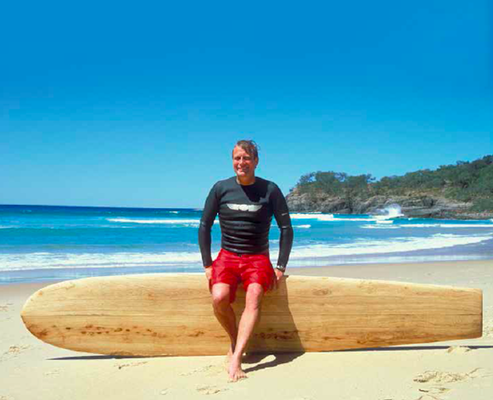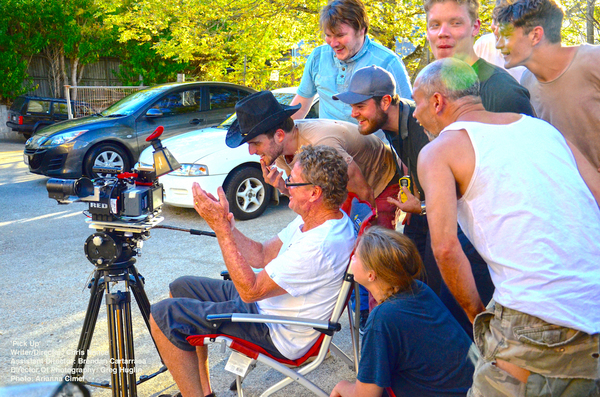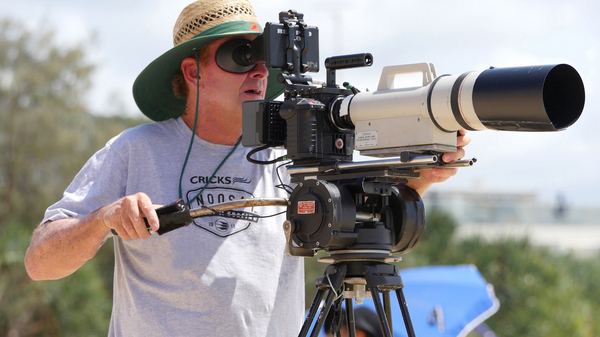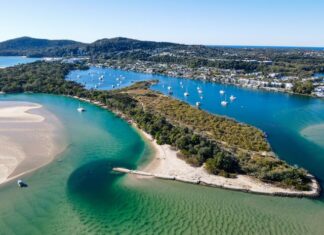By Phil Jarratt
Not too many people in Noosa can say they’ve won an Academy Award, but then not too many people have pointed a camera at such a diverse range of subjects – from dolphins to monster waves to catwalk models – as Greg Huglin has over a long and storied career.
Now the American-born cinematographer is planning to share his wealth of knowledge with people of all ages who want to improve their filming technique, whether they’re looking for that elusive Oscar or just a better selfie.
I’ve known “Huggie” since the 1970s, when he was travelling the world gathering material for his first full-length surf feature, Fantasea, and our paths crossed here and there in the world of surfing over the years, but in recent times, since he, wife Andrea and children Jasmin and Josh decided to call Noosa home, it’s been a real pleasure to renew the friendship.
After graduating with a film-making degree from San Francisco Art Institute, as well as picking up university level teaching credentials from California Community Colleges, Greg had a stint working as a fashion photographer in New York before eventually returning to home base Santa Barbara and devoting himself to shooting the best over and underwater footage ever seen. Along the way, he took on a young intern called Jack Johnson who was showing great skill as a surf cinematographer until a singing career got in the way.
By the turn of the century, Greg was making a name for himself shooting the new frontier of surfing – extreme big waves. His 2006 feature Shark Park remains a classic of the big wave genre, but he was also casting the net wider, shooting specialist footage for big Hollywood productions. It was in this way that his cinematography for the extraordinary film The Cove, revealing the senseless slaughter of dolphins in Japan, won him a shared Oscar for best documentary of 2010.
Since the family’s move to Noosa in 2014, Greg has continued to travel to the world’s big wave hotspots, like Hawaii’s Jaws and Portugal’s Nazare, but he has also pointed his state-of-the-art Red Epic camera at local longboarders, and picked up camerawork on big local productions, such as the Erroll Flynn biopic, In Like Flynn, currently shooting on the Gold Coast, and guest-lectured at USC.
When I asked Huggie to co-host a luncheon at the Laguna Real Estate Noosa Festival of Surfing last March with legendary big wave filmer Tim Bonython, I was impressed with the way he conveyed his knowledge of film-making to a rapt audience with a slick patter and a healthy dose of self-deprecating humour. I thought he’d be a natural as a teacher of film skills. Little did I know that this was already the game plan.
Since then Greg and Andrea have established the Noosa Film Academy, offering full and half-day courses for individuals and schools in all aspects of film-making and natural light stills photography. Says Greg: “Our students learn how to shoot short scripted films on location, and alternate between the key roles of director, camera operator, script supervisor, actor, sound operator and editor.” If you think that’s a lot of information to digest in one day, you don’t know Huggie, who cuts to the chase while keeping it accessible to the layman.
The Noosa Film Academy is open for business now. Visit www.noosafilmacademy.com for more information, or call Andrea on 0429 776 680 for class times and dates.
Soul surfers: from killing Bambi to quoting Socrates
A couple of weeks back in these pages I shared a few yarns about the legendary Bob McTavish, who will be appearing next Monday night at Soul Surfers, part of the Noosa Alive Festival of Thought.
Today, I turn my attention to the equally legendary Tom Wegener, of whom the erudite editor of Swellnet and surfboard fanatic Stu Nettle recently wrote: “Few surfers have done as much to strip surfing down to its fundamentals as Tom Wegener. The Californian expat eschews legropes, thinks fins are optional, and that wood is the finest of all materials – much the same as the ancient Hawaiians did on their olos and alaias. According to Tom, surfing requires nothing more than rider, board, and wave. But such minimalism belies a sophisticated appreciation of surfing. In contrast to his actions, Wegener has cultivated an ornate secret garden, and in (his book) Surfboard Artisans he opens the gate to curious wanderers.”
Representing a younger generation of soul surfers than McTavish, Tom, now in his fifties, was a solicitor in California until the surf bug bit him and he gave up his career to design surfboards and travel the world looking for waves. This search led him to Noosa in 1998, where he fell in love, started a family and made his home. Today he is the most respected name in the world of sustainable wood surfboard production, has a PhD in sustainable technology and has published a well-received memoir.
As Stu Nettle has noted, perhaps the most interesting aspect of the scholarly Surfboard Artisans is the way Tom, who was accused by some of his closest friends of selling out when he started mass producing foam and fibreglass versions of his wooden alaia boards, turns the blowtorch on himself to analyse exactly what we mean by “selling out”.
This is compelling stuff, and I’m looking forward to taking the theme further when I sit between Wegener and McTavish on the panel of Soul Surfers at the RACV Resort on Monday night. Don’t miss out. Tickets are available at noosaalive.com.au










